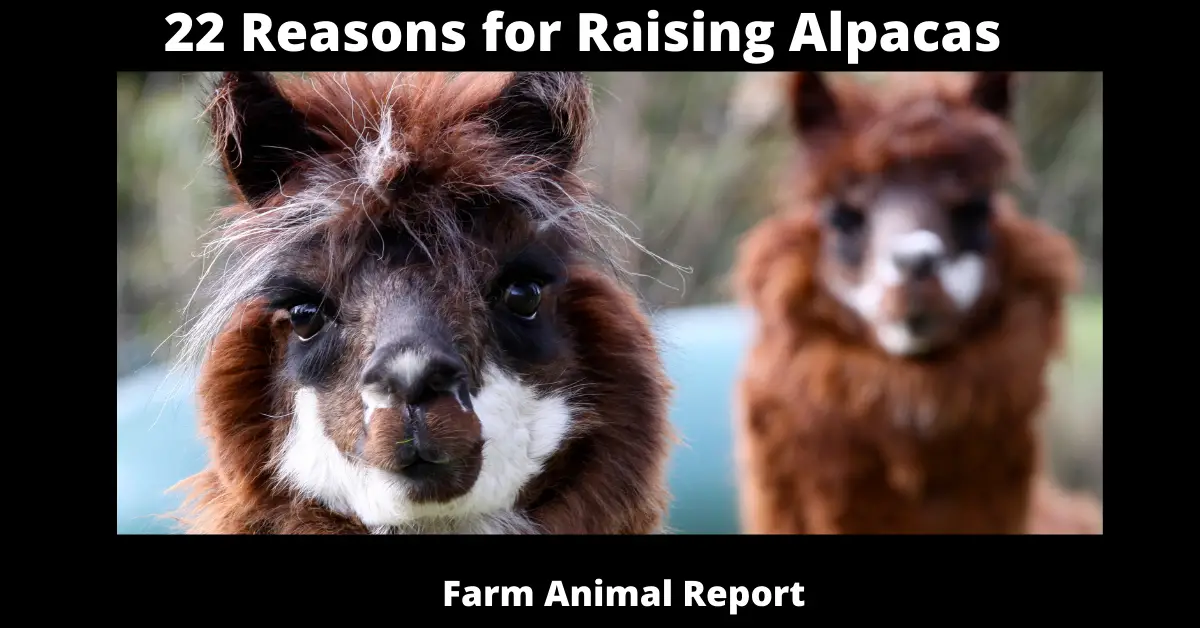How Much Does an Alpaca Cost?
As a general rule Alpaca Cost vary from $100 – $10,00 with the average being $800. The cheapest alpacas are around $100, and this is mainly applicable to Suri breeds or those with no breeding potential. If you’re interested in purchasing an alpaca as a pet, a gelded male with no breeding potential can have as little as $800. OpenHerd.com currently has several alpacas for sale, ranging in price from $85 to $10,000.
Benefits of Raising Alpacas
How Much Does an Alpaca Cost? Raising Alpaca – Alpacas, along with their larger cousins, llamas, and camels, are members of the Camelid family. Camelids have padded feet as opposed to hooves, which are more gentle on the land. Alpacas, like ruminants, graze on grass and chew their cud. However, the alpaca’s digestive tract consists of three chambers rather than four. Alpacas live an average of about 20 years and weigh between 100 and 200 pounds as adults.
Check Out Amazon’s Educational Resources for Raising Alpacas
Alpacas come in two varieties. The very common is the Huacaya, whose crimped fiber grows directly out of the animal’s body, giving it a fluffy appearance. Suri fiber is silky straight and hangs in locks.
Alpacas were historically bred in South America for their fiber. Their fleece is softer, stronger, and warmer than sheep’s wool (at the same weight). Each year, an adult produces up to ten pounds of fiber. The alpaca fiber is processed differently than sheep’s wool, and the processing costs can be high.
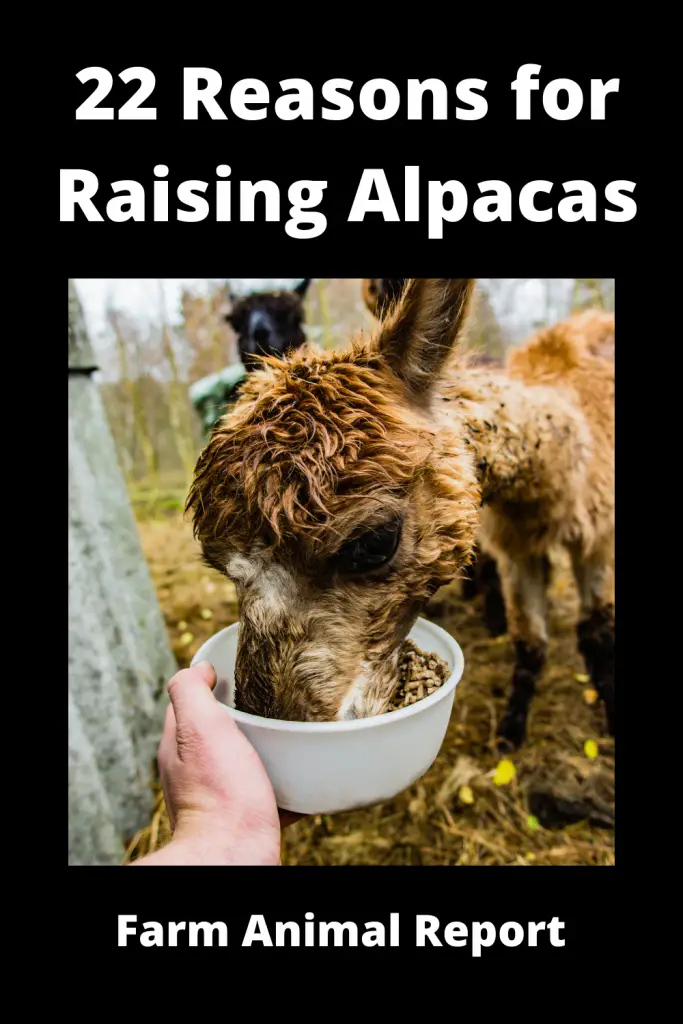
As an outcome, it can be challenging to establish a sustainable business raising alpacas solely for their raw fleece. Numerous proprietors sell breeding stock and value-added products such as handwoven scarves, felted bags, and knitted socks.
These animals are frequently bred for pleasure rather than profit. Those with short fleece or conformation to qualify as breeding stock are commonly sold as pets.
18 ways Alpaca Farmers make Money
Alpacas are extremely gentle creatures. Male alpacas will spar with one another for dominance, but we have never seen a male alpaca attack a human. We allow our grandkids to roam freely in the alpaca pens. Alpacas’ peaceful nature is in part due to their silence. They walk quietly through the pasture on their soft footpads. They are rarely vocal, except when content, except when humming.
Are Alpacas Easy to Care For?
Alpacas are popular for a variety of reasons, one of which is their ease of care. Animals that respect fences are relatively easy to halter train and require little effort.
A single acre of good pasture can typically support between five and eight animals. The pastureland for alpaca can be fenced with 4-foot-high woven wire (sheep fencing), although 5-foot-high fences are occasionally used for males or in areas where large predators are present.
Alpacas require shelter but are incredibly hardy in the winter. Alpacas are kept in uninsulated, unheated barns throughout Alaska and the Yukon. However, in hot areas, it is critical to avoid heat stress.
Alpacas require hay when they are not on pasture, preferring leafy second-cut hay. Fifteen alpacas consume approximately the same amount of hay as one horse. The exact number of bales required varies according to the length of the winter. The reproductive state of the animals growing, lactating, and pregnant animals needs more than geldings and hay quality.
Female alpaca in late gestation and early lactation, as well as growing children, typically require grain. Supplements for alpacas are available at alpaca farm stores throughout the continent. Typically, the herd is provided with unrestricted access to a mixture of minerals and salt.
Are Alpacas Easy to Raise?
Alpacas are naturally curious and gentle creatures, making them easy to handle and enjoyable to be around for children. They are easily trainable and do not spit excessively, honestly. Alpacas are simple to care for, easy to handle, and safe around children. Alpacas are highly adaptable and tolerant of a wide range of climates, elevations, and conditions. Alpacas get along well with other animals such as goats, sheep, donkeys, horses, cats, and household dogs.
Adult alpaca’s weight ranges between 125 and 175 pounds on average. They live between 20 and 25 years. Alpacas require a small amount of space. If rotational grazing is used, 1/8 of an acre is sufficient for one alpaca. A 4-foot field fence provides an adequate enclosure.
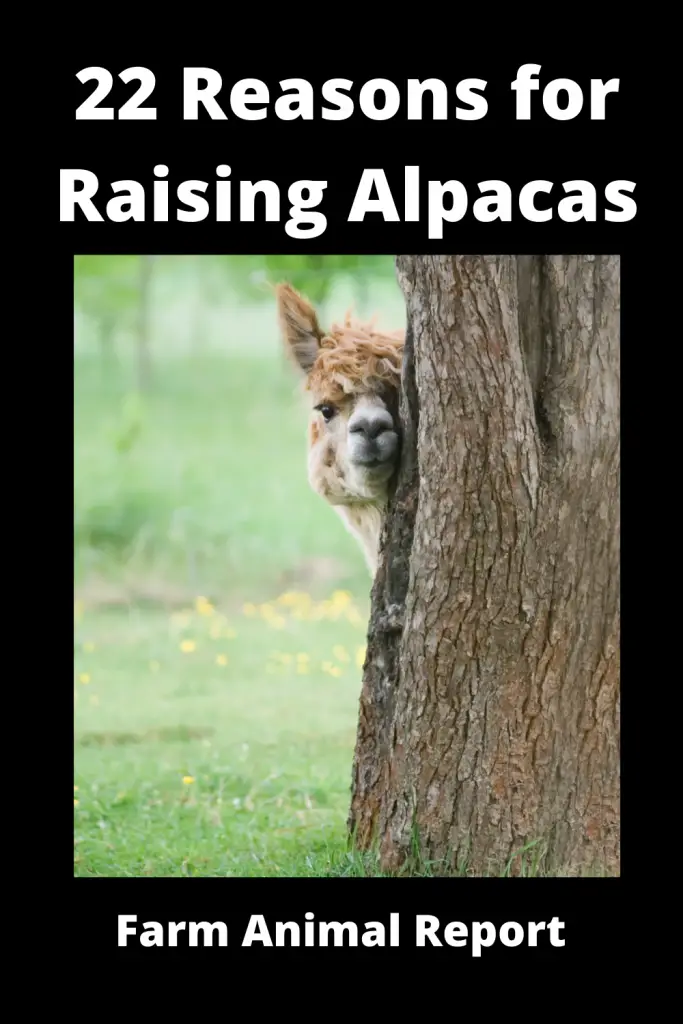
How much does it Cost to Raise an Alpaca?
Alpacas are generally divided into two breeds: the Huacaya and the Suri. Huacayas are the more common of the two. They do, however, have the superior fleece, which is short-fibered, compact, and crimpy, as opposed to the Suris’ long, silky wool. How much does an alpaca cost? Numerous factors influence alpaca pricing, but gender, color, and history have the most significant impact.
Alpaca prices typically begin at $800 and can reach several hundred thousand dollars for rare and proven champions and those that produce superior fleece. Additionally, a baby alpaca is less expensive than an adult male or female, as they must be maintained until they reach maturity. However, the price of a baby alpaca (referred to as a cria) would increase if it was born to superior breed parents.
The cheapest alpacas are around $100, and this is mainly applicable to Suri breeds or those with no breeding potential. If you’re interested in purchasing an alpaca as a pet, a gelded male with no breeding potential can have as little as $800. OpenHerd.com currently has several alpacas for sale, ranging in price from $85 to $10,000. When purchasing alpacas, keep in mind that they are herd animals and should not be left alone. Alpaca farming is also significantly less expensive than other breeding programs if you are only interested in fleece.
Transport Costs
Unless you intend to keep an alpaca as a pet, the cost of alpaca transportation should also be considered. Numerous buses travel throughout the United States, dropping off alpacas all year. Transport typically takes ten days and costs between $350 and $500 per alpaca head.
Fortunately, alpacas are relatively easy to transport, as they typically sit down once the vehicle begins to move. If you’re concerned about the alpacas’ welfare during transport, rest assured that the carriers provide food, water, and air conditioning to ensure the animals’ comfort during their journey.
Registration Costs
Alpacas must be registered to ensure the validity of their pedigrees and to keep track of their bloodlines. The cost of registering alpacas varies. However, it is best to register alpacas as soon as they are born, as the longer you wait, the more expensive alpaca registration becomes.
Registration is only $55 for alpacas under one year of age but only $20 for non-breeders, or “geldings.” Transfer of registration is required when alpacas are purchased and sold. This item is $35 for those sold within 180 days of purchase and $55 for those sold after that period.
Housing Costs
Alpacas are relatively easy to the house because they only require a cool, dry place to escape the elements or even some predators. With this in mind, housing would have to be location-specific.
In areas where the winter season is particularly harsh, a three-sided shelter will suffice to keep your alpacas warm. You would need to take certain precautions during the summer to keep the animals cool. This is usually remedied by installing a sprinkler system. The average cost of housing alpacas is $800.
Fencing
This is where things can get expensive. Fencing is necessary to ward off predators and keep alpacas from wandering too far. The fencing cost is determined by the type of fence you wish to install and the materials required to construct it. While prices vary, you should expect to pay at least $1000 for fencing and up to some thousand dollars depending on the size of your property and labor costs.
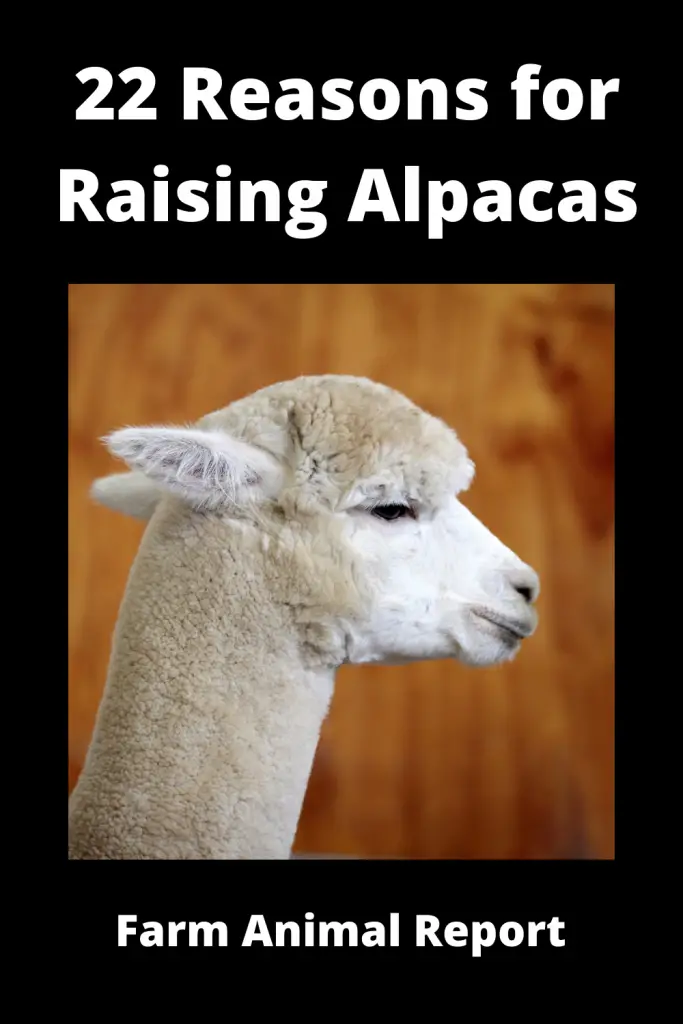
Other Costs
Additionally, you must purchase alpaca-sustaining equipment such as feeding troughs, water troughs, cleaning equipment, and a first aid kit, which may cost up to $670.
What are the Benefits of Raising Alpacas?
Alpacas provide a family-friendly lifestyle with numerous benefits and opportunities. Raising these endearing animals provides relaxation, entertainment, and a source of income.
- Alpacas are hygienic and intelligent animals.
- They produce fiber as fine as cashmere, soft and silky as cashmere, and significantly warmer and stronger than sheep’s wool.
- Alpacas come in various colors, including white, black, brown, grey, and fawn, and any combination of these colors, making them the most colorful fiber-producing animal.
- Alpacas are indigenous to the Peruvian, Bolivian, and Chilean High Andes.
- Qualify as livestock and thus may qualify for tax breaks and incentives.
- Alpaca farm are ideal for Hobby Farms and small acreages because one acre of productive pasture can support 5-8 animals.
- Alpacas are quiet, peaceful animals that communicate through soft humming sounds.
- Alpacas are simple to care for, easy to handle, and safe around children.
- Alpacas are highly adaptable and tolerant of a wide range of climates, elevations, and conditions.
- Alpacas get along well with other animals such as goats, sheep, donkeys, horses, cats, and household dogs.
- Adult alpacas weight ranges between 125 and 175 pounds on average. They live between 20 and 25 years.
- Alpacas require a small amount of space. If rotational grazing is used, 1/8 of an acre is sufficient for one alpaca. A 4-foot field fence provides an adequate enclosure.
- They are well-suited for grazing on marginal land.
- Alpacas consume two pounds of hay and 0.75 pounds (approximately a cup) of a supplement daily.
- Female alpacas are typically bred for the first time at the age of 18 months. Their average gestation period is 1112 months. Males are generally ready to breed between the ages of two and four.
- Deliver during the day, typically between 10:00 AM and 2:00 PM.
- Alpacas make cleaning the corral simple, as they “go” in a limited number of locations.
- Alpaca droppings are virtually odorless and are ideal for soil enrichment.
- Alpacas can be transported easily in a pickup truck, van, or trailer. They frequently doze off during transit.
- Alpaca shows and competitions are an excellent way to promote an individual alpaca or an entire herd.
- Alpacas are extremely attractive.
- Alpacas spit at humans very rarely – usually only when they are nervous or excited.
Benefits of Alpaca Wool
Both Suri and Huacaya alpacas produce wool that is soft and light to the touch and highly durable. European fashion houses purchase this fine wool to create high-end garments. It is sought after because it is stronger than mohair, which can be pretty scratchy, smoother than silk, softer than cotton, and as delicate as cashmere.
Alpaca fleece doesn’t contain lanolin like sheep’s wool, making it much easier to prepare the fleece without resorting to intense washing and chemical treatments to remove the lanolin. Additionally, alpaca fleece is hypoallergenic. Alpaca Owners can also get more info at the Alpaca Owners Association, and Alpaca Fiber Cooperative.
How Hard is it to Care for Alpacas?
One of the most critical aspects of keeping any livestock for alpaca owners is having an adequate supply of the right property. Horses and cattle require considerable acreage, but how much space does an alpaca require?
Alpacas are one of the fascinating creatures on the planet. Alpacas are not difficult to care for — in fact, they are pretty easy to keep and even easier to maintain. One of their main benefits is that their fleece produces one of the most muscular fibers available, used in various industries. Alpacas are light eaters and thrive on a wide variety of terrain. They convert food quickly and efficiently into energy and do not require a lot of lush pasture.
They prefer hilly, interesting, wooded territory, but they can be raised on flat pasture or a relatively small paddock. The most critical consideration when selecting land for alpacas is safety. You must ensure that you can thoroughly enclose your pasture area to keep predators out.
Additionally, it is preferable if alpacas are kept separate from other livestock. They are easily intimidated by the majority of other creatures. Sheep appear to be docile enough to run alongside alpacas, but they graze pastures to the ground, leaving nothing for alpacas to nibble on.
You can keep an Alsatian dog with your alpacas if you keep a defense animal. A donkey jenny will effectively defend them but should be contained within the alpaca pen’s perimeter fencing rather than running alongside the alpacas.
Alpacas Do Well in Fairly Small Spaces
When determining how much land an alpaca requires, keep in mind that the animal must be socialized to be happy and healthy. These herd animals need the company of at least one other alpaca.
With that said, you’ll be pleased to learn that you can keep up to five to eight alpacas on an acre of land. This varies considerably by location and is highly dependent on the quality of the pasture and the amount of hay fed.
With fewer animals and better pasture, you may be able to let your animals roam freely. If not, you’ll need to feed at least once daily. You can provide only hay, or you can supplement with grain. Again, this is dependent on the number of animals and the condition of the pasture. Additionally, you must provide plenty of fresh, clean water at all times, which means that any property you use must have a natural water source or be easily accessible to a fixture.
Are Alpacas Low Maintenance?
Alpacas are herding animals, and it is recommended to keep at least three – a single alpaca would be incredibly lonely, and its health would almost certainly suffer. Alpacas are generally low maintenance; they happily graze on short pasture supplemented with hay, particularly in the winter.
They should also receive a daily vitamin/mineral supplement (which aids in training), and pregnant women and children should receive additional protein alpaca feed. The alpaca fleece can grow to be up to six inches long and extremely dense – fortunately, they do not require brushing! Shearing occurs annually, and a large number of shearers travel throughout the country to perform this task.
Do Alpacas Make Good Pets?
Alpacas are endearing, intelligent, and gentle creatures with adorable faces and inquisitive personalities. They make excellent pets and serve a variety of valuable purposes. Alpacas are naturally curious, docile, and friendly animals that can be pretty affectionate when appropriately handled.
They make excellent companions for horses, sheep, goats, and even chickens! Alpacas thrive in small paddocks – up to an acre will support 4-6 “furry lawnmowers.” They spend the entire year in their fields and do not require confinement; however, they should have access to shelter. Due to their origins in South America, they are hardy animals accustomed to extremes, and they may forego using their shelter even during our most bitter winters.
Alpacas come in various colors, ranging from white to fawns, browns, and greys to black and multicolored. They quickly win hearts with their teddy bear-like faces, large eyes, and long lashes. They communicate primarily through their tail and ear positions and a variety of amusing humming noises.
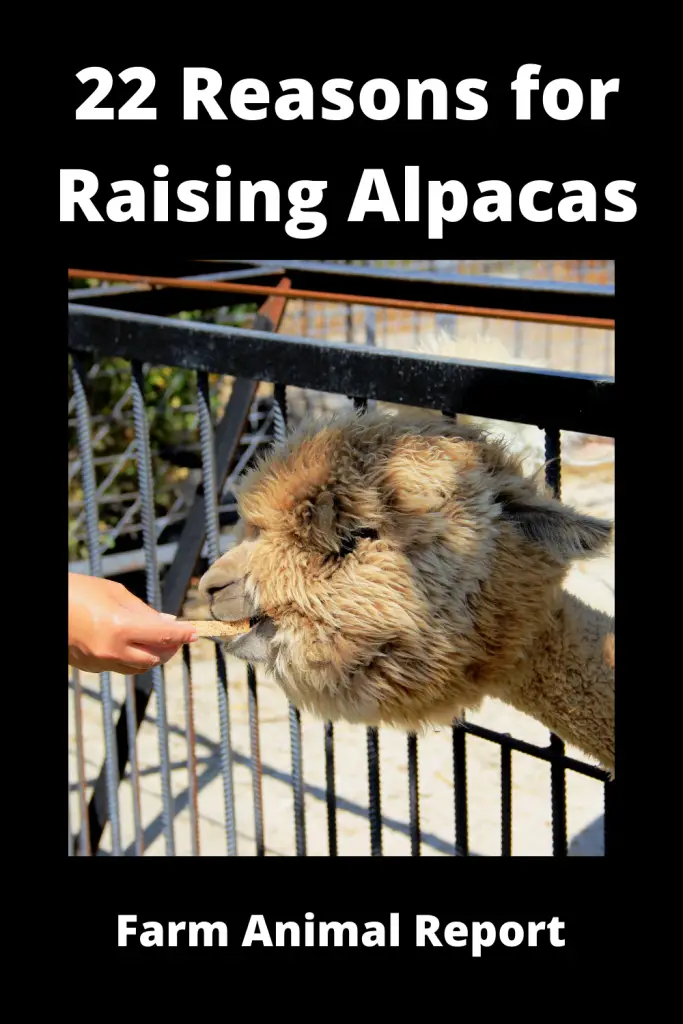
Caring for your Alpacas
Unlike other livestock, which will leave their feces anywhere in a field, alpacas utilize a communal dung pile, which simplifies cleaning up and collecting dung for composting. The alpaca manure is entirely composed of grass and plants and is easily compostable. It is possible to ‘house-train’ alpacas if they have unrestricted access to and from the house and a designated area for their dung pile outside.
They enjoy taking a dust bath to clean themselves, but you may need to check their eyes and ears for parasites and may need to remove seeds and other matter from alpaca fleece. Their toenails should be clipped approximately every six months if they are on soft pasture and their toenails do not wear down.
How Much does an Alpaca Cost?
The price ranges from $100 to $1000 or more, depending on the animal’s age, gender, and performance at alpaca shows. At the same time, the breeding stock is more expensive, while the castrated male is less expensive because they are typically sold as pets rather than breeding stock.
If you want to keep alpacas as pets, you should budget around $500 for a healthy young animal. You may be lucky to find someone giving away an animal, but always have them examined by a veterinarian before accepting them onto your homestead – you’ll understand why once you read the diseases section.
Do they get Along with other Animals?
Alpacas prefer to socialize with their kind but will happily graze alongside horses, goats, and sheep and may even make friends with family dogs if they are not startled.
Cats and alpacas can also be excellent companions. It is entirely dependent on how they are raised. They are herd animals that rely on a single alpha male to raise the alarm. Although they are gentle animals, they can be pretty nervous – bear in mind that they, like deer and horses, are prey animals and will act cautiously if threatened.
Once you’ve acquired your alpacas, train them to wear a halter; they’ll be more friendly if they understand that having a halter slipped on them signifies an outing to a new pasture or some other pleasant experience such as apple treats and neck scratches.
What do Alpacas Eat?
What to Feed Alpacas eat grass or hay and consume a small amount relative to their body weight – only 1.57 percent of their body weight per day, or 2.25 pounds of fresh pasture or hay for a 150-pound animal.
They are 100% herbivores, but if you want to spoil them, they will appreciate chopped apples – remove the seeds first – carrots, celery, or lettuce.
They may even accept a few fresh pineapple chunks. Take care not to overfeed treats or hay, as obese alpacas can have reproductive and birthing problems. Avoid feeding them bread, biscuits, nuts, or grain-based foods, as these can cause ulcers and death if fed regularly.
Are Alpaca Farms Profitable?
Alpaca farming is well-known for its numerous benefits and the fact that it’s a lot of fun. One of the many reasons why many people support alpaca farming is that these camelids are softer, warmer, and lighter than wool. Alpacas are also known to come in various colors, making this product extraordinarily usable and eliminating the need for dyeing, as this product comes in over 22 shades of color.
See our Esxtensive Article – 18 Ways Alpaca Farmers Make Money
Additionally, alpaca farming is environmentally friendly because, unlike other animals with hooves, alpacas have only two toes and are incredibly light on their feet. While alpaca farming has numerous advantages, it is not without drawbacks. Although it is the fastest-growing farming industry and is currently very profitable, many farmers worldwide cannot earn the industry’s promises. The justification for this, according to some, is that alpaca farming is not a quick fix but rather a long-term investment. That means that when it comes to alpaca farming, you must be prepared to wait patiently to reap the benefits of an alpaca breeding and expanding your herd. A Good Place to Check is the Alpaca Owners Association.
Final Thoughts
As many reasons as there are alpaca owners, there are reasons to raise alpacas. Each of us makes this choice based on a variety of personal needs and circumstances. Among the most frequently cited reasons for considering alpaca ownership are the enormous business opportunity, a passion for luxury fiber, a desire for a rural lifestyle, a desire to show animals, and simple companionship and community. The market potential for an animal with alpaca-like characteristics is enormous. Alpacas are adored by their owners and revered by those who process or use alpaca fleece products.
| Farm Name (Open Herd) Over 1200 Alpaca Farms in United States | Herd Size | Location | Contact | Price - Open Females | Males | Stud Fee |
|---|---|---|---|---|---|---|
| Flatland Farm | 18 | Kansas | Dian and Steve Trainer 21302 SW County Line Rd Rose Hill, KS 67133 316-469-9816 316-250-2231 | Open Female $2,000 - $ 6,000 | $2,000 - $12,000 | $1000 |
| Lizard Hill Suri Alpacas | 25 | Colorado | Kent and Sandy Murray 351 PURDY MESA RD Whitewater , CO 81527 970-250-7335 970-243-3520 | $ 500 - $650 | $500 - $1,200 | |
| Alpacas of Paca Meadow | 26 | Washington | Berne and Linda Thorpe 354 Bickleton Highway GOLDENDALE, WA, WA 98620 2535089757 | Call for Pricing | Call for Pricing | Call for Pricing |
| Oden Falls Alpacas | 67 | Oregon | Odin Falls Alpacas Allen Kallel 9101 NW 31st St. Terrebonne, OR 97760 Call Us 5414102324 | Call for Pricing | Call for Pricing | Call for Pricing |
| Circus City Alpacas | 23 | Indiana | Richard/Andrea Hammersley 2642 W 200 N Peru, IN 46970 765-863-3701 765-863-3702 | $ 4,000 - $5,000 | $1,000 - $5,000 | $750 |
| Alpaca Bella Fina Ranch LLC | 39 | North Carolina | Della, Shelby, Mercedes Wagnon 00000 Rocky Mount, NC 27801 1-208-315-5843 | Call for Pricing | Call for Pricing | Call for Pricing |
| Zodiac Ranch | 53 | Michigan | Linda Lundstrom 2791 North Wixom Rd. Milford , MI 48381 (248) 685-0403 248-202-0178 | $1,500 - $12,000 | $3,000 - $25,000 | $500 - $1,000 |
| Redhaven Ranch | 20 | Utah | Red & Marie Armfield 4008 W 1800 N West Point, UT 84015 801.791.7579 801.549.7779 | $ 500 - $2,500 | $ 1,000 - $3,000 | $1,000 |
| Exotica Farm Alpacas | 15 | New York | James Ward 4636 State Route 13 Truxton , NY 13158 315-289-5078 | Call for Pricing | Call for Pricing | $500 |


